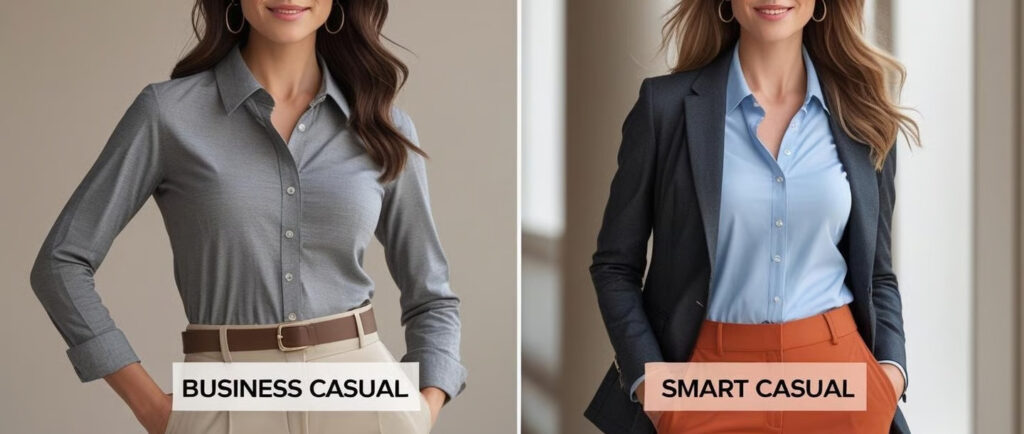Let’s be real: at some point, you’ve Googled “business casual vs. smart casual” before an interview or office event. And if you ended up more confused after reading five conflicting articles, you’re not alone.
These two dress codes sound like they should mean the same thing; but they don’t. And understanding the difference can save you from showing up underdressed, overdressed, or just awkwardly in between. Here’s a breakdown to help you navigate both with confidence.
First, What’s the Point of Dress Codes Anyway?
Dress codes are about aligning with the culture of the environment you’re stepping into. Whether it’s your first day at a new job or a casual networking event, what you wear can quietly signal respect, professionalism, and self-awareness. Now let’s get into the details.
Business Casual: Still Means “Business”
Business casual is a dressed-down version of traditional office wear. Think of it as: “I didn’t wear a full suit, but I still mean business.”
Where does it fit: Corporate offices, job interviews, client meetings.
For Men:
- Collared shirts (button-downs or polos)
- Chinos or dress slacks
- Blazers (optional but sharp)
- Leather shoes (loafers, brogues, sneakers are usually a no)
For Women:
- Blouses, structured tops, or modest dresses
- Tailored pants or skirts
- Blazers or cardigans
- Closed-toe flats, loafers, or low heels
Smart Casual: A “Stylish” Step Down
Smart casual is a bit more relaxed, with more room for personality and trend. Think: “I’ve got taste, I’ve got polish—but I’m also not trying too hard.”
Where it fits: Creative workplaces, casual Fridays, dinner with colleagues, casual interviews (like startups or media)
For Men:
- Polo shirts, casual button-downs, quality T-shirts
- Slim chinos or dark jeans
- Casual blazers or jackets
- Clean sneakers or loafers
For Women:
- Trendy blouses
- Stylish trousers, midi skirts, or dark jeans
- Clean, simple dresses
- Fashion-forward flats, boots, or sneakers
Pro Tips:
- When in doubt, lean business casual. You can always dress it down later.
- Observe your environment. Company culture.
- Fit matters. A smart casual outfit that fits well beats a sloppy business casual one any day.
- Grooming counts. Neat hair, clean shoes, and wrinkle-free clothes.
Final Thoughts: Dress to Empower, Not Just Impress
Mastering the difference between business casual and smart casual isn’t about fashion rules; it’s about understanding context, reading the room, and showing up as your best self.
With the help of Barros Image Consultancy, you can learn communication skills, etiquette, and undergo training and development that will help you present your best self. Plus, you’ll always have the opportunity to learn something new and continue to grow.


